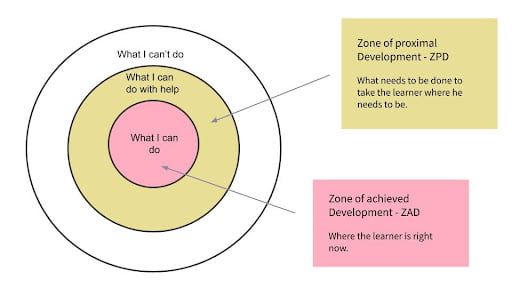Zone of Proximal Development
Psychological and educational theorist Vygotsky developed the concept of the Zone of Proximal Development (ZPD), which became a key component of his sociocultural theory of learning and development. In Vygotsky’s view, the ZPD refers to the range of tasks a learner can accomplish with the assistance of a more knowledgeable individual, such as a teacher or a more talented peer. Collaboration and problem-solving can be offered as part of this assistance, including guidance, scaffolding, and support.

According to my experience, playing and participating in group activities strengthens the child’s social and cognitive development. Because peer interactions allow children to learn from one another, share ideas, and receive assistance within their ZPD. This way one of the methods we used in kindergarten.
In general, the Zone of Proximal Development helps daycare educators understand and support each child’s unique developmental trajectory. It is important for daycare settings to recognize and respond to the ZPD in order to foster children’s growth, curiosity, and love for learning while they are still in their critical early years.
Reference: https://chattalearning.com/what-is-the-zone-of-proximal-development/